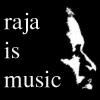-
21st June 2006, 11:50 PM
#51
Senior Member
Veteran Hubber

vasanth,
Sure that song was a good example. Iam learning and getting to interpret better
SJ's humming comes in three different tempos/paces. while the basic humming remains the same there are added layers of the same tune in which she is humming but slightly in different pace. here is the same link i gave earlier where its mentioned.
http://www.classicalarchives.com/dict/counterpoint.html
in strict counterpoint the processes are studied under 5 heads, the result of an analysis which dissects the practice of the art into 5 species. Following the practice of early composers a cantus firmus (fixed song) is employed, i.e. a short melody, set by the master, against which another melody is to be written by the student— or, it may be, several such melodies. It is usually set out with one note to a measure (bar).
The species are as follows: I. The added v. proceeds at the same pace as the cantus firmus, i.e. with one note to a measure. II. The added v. proceeds at twice (or 3 times) the pace of the cantus firmus, i.e. with 2 or 3 notes to a measure. III. The added v. proceeds at 4 (or 6) times the pace of the cantus firmus, i.e. with 4 notes to a measure. IV. The added v. proceeds (as in Species II) at the rate of 2 notes to 1, i.e. 2 to a measure; but the second note is tied over to the first note of the following measure, i.e. syncopation is introduced. V. (Sometimes called florid counterpoint.) The added v. employs a mixture of the processes of the other 4 species and also introduces shorter notes (quavers).
Another good example for this kind of two or three voice counterpoints can be 'Raaja Raajathi Raajan intha' and 'Pottu vaitha kaathaal thittam' 
The case example of 'mandram vantha' is a good one and I think its just an accompaniment to the main tune which adds beauty to the song but not a counterpoint  <Iam still skeptical about this and should listen to the song again to comment. Iam writing this as the song is being hummed in my mind
<Iam still skeptical about this and should listen to the song again to comment. Iam writing this as the song is being hummed in my mind  >
>
If that is true then every tabla or rhythm accompaniment can be replaced with a human voice like jingujja jingujja, jajak jajak,, la laa laa etc., and can be called as counterpoints is it not ?
-
21st June 2006 11:50 PM
# ADS
Circuit advertisement

-
25th June 2006, 06:37 PM
#52
Senior Member
Devoted Hubber
RS,
I think accompaniments go as a "Thaal" rather than a different melody!!, so a replacement would not go to be termed per-se to counterpoint.
-
30th June 2006, 11:56 AM
#53
RS,
Thanks for the response. I appreciate your patience.
1. From your earlier posting, what I interpret is that the same tune played in different pace along with the main melody is called counterpoint. I think that is only one kind of CP.
For that matter, in "Kaanaae kalaimane" there is a violin sincerely follows every note of the Pallavi and Charanam (sometime I feel that the song was recorded with violin during the track recording (by VSN?) and was filled in later by KJY). To be it is not a CP. I look at it more like the violin that follows the singer note by note in our Carnatic katcheris.
There is another variety of Counterpoint where exactly at the every eighth note the same melody will start and played and later it is elaborated later. I think it is called Canon or imitative polyphony. I am not sure.
(In Tamil, “Kandane engum poomazhi katrinilae” IR just tried (not exactly at the eighth note though) for the first line as an echo)
(ARR tried in “Chaaiya Chaaiyare” in Sathiya, not exactly at the eighth note)
2. Counterpoint by definition note-to-note. I do not know the percussion is considered as note-to-note.
3. Another example I can think of is "Raakkamma Kaiya thattu". Initially Pallavi is filled with brisk (should I say majestic) violins in a call and response fashion. If you are listening for the first time you cannot even imagine that this same melody will be accompanied by another melody in female voice.
At the end of the second Charanam another independent melody (lady voice) is introduced from nowhere and at the end of the song the Pallavi and this humming were nicely interwoven to make a single melody. To me this humming is not like other instrument accompaniment.
From my understanding, in the initial Pallavi the violins are accompaniments (call/response) for the main melody and at the end, the same Pallavi is sung with Countermelody.
Thanks.
-
1st June 2007, 01:47 PM
#54
Senior Member
Regular Hubber
Whatever happened to this very good thread..!!!
<Iam still skeptical about this and should listen to the song again to comment. Iam writing this as the song is being hummed in my mind
>







 Reply With Quote
Reply With Quote
Bookmarks